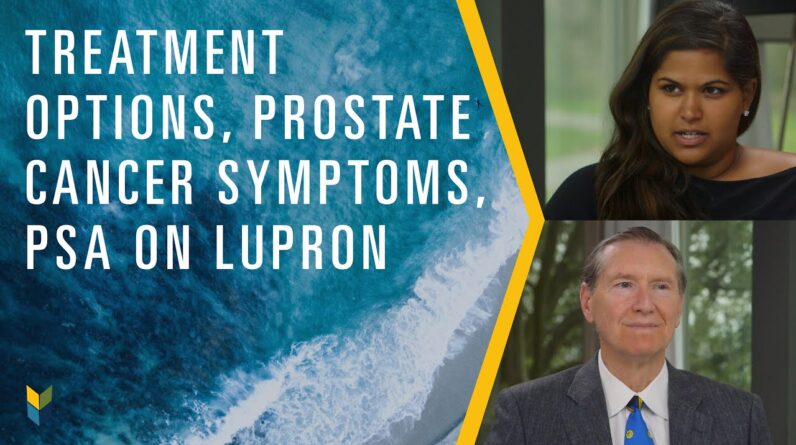
So, Dr. Scholz, we have a patient who's trying to
choose the best course of action. He didn't list his age, but usually the median, you know,
caller that we get in is about 68—between 68 and 72—so they had a clear MRI, clear bone
scan, the genomic test came back as high-risk and their first PSA was 4.7 and then it is
currently 3.0.
The biopsy found two positive cores — one core was 4+4 with fifteen percent
involvement and the other one was 3+4 with ten percent involvement, and they want to know
should they pursue aggressive treatment? You know, does the 4+4 put them in the high-risk
category? What do you think the next steps are? The Gleason score drives the dialogue as the
number one thing; it's more powerful than PSA; you could argue it's more powerful than
percent biopsies and even tumor size. So, 4+4 is high-risk, and that doesn't really lend
itself to any kind of monitoring unless someone's maybe in their 80s you could watch it. So, it's
time to treat it, and that opens up a big can of worms. There's so many different options
and could he could he undergo focal therapy, radiation treatments, some sort of, you know,
systemic therapy is usually part of the mix, but I'd say the one thing we could
say fairly confidently is that it's not active surveillance time unless they're in their 80s. So our next question is regarding prostate cancer
symptoms.
Now, we get a lot of questions about this. Obviously with our YouTube channel and our
website we're encountering a lot of people who are trying to figure out if they have prostate cancer,
maybe they haven't had an official diagnosis, and this person has blood in their urine, and they're
wondering, "Is this a symptom of prostate cancer?" Almost certainly not. One thing
that's missing in that analysis is what is their PSA? My feeling is that
if people are checking their PSAs and their PSAs aren't ridiculously out of whack
say over 20 or even much higher than that, symptoms are almost invariably from prostatitis
or BPH or infection or some other unrelated cause, not cancer.
Cancer is a silent problem and this
is why PSA was so revolutionary when it came out in the late 80s. PSA gave us some insight into
what we considered a totally silent illness. So symptoms are a clickbait for people.
"Prostate cancer symptoms" we're all obviously very protective of our own health
and the thought of cancer is quite frightening and we listen to our bodies carefully,
and especially people that have dealt with cancer in the past there's, you know.
does this ache or pain represent cancer? But PSA has changed that.
If people's PSA is
in check—which means if it's normal or it's, you know, say less than in the 20s, picking
the number I used previously—guaranteed, symptoms are not from prostate
cancer, not at such low levels. So our next question is regarding PSA readings.
This person has been on Lupron for six months and they'd like to know what is a
good range for their PSA to be at since the Lupron seems — is it working or not? It's a very relevant question. The things that we
use to predict how people are going to turn out long-term with prostate cancer — How's the Gleason
score? PSA responses, this person's talking about or we call it PSA nadir, the six-month time period
is very apropos.
After a person begins hormone treatment, we expect the PSA to bottom out within
about six months, and where should it bottom out? Ideally less than 0.1, and in patients who
are not seeing their PSA get down to less than 0.1 after six months, those individuals
may have a more vigorous type of cancer, and further investigation may be necessary to make
sure that this is not something a little worse than what was initially thought.
Most patients
will have their PSA drop to 0.1 within 6 months. Hey everyone, it's me and
SirHuntertheDal, our PCRI mascot. Please subscribe to our YouTube channel; Hunter
definitely wants you to, and if he can high-five me, you have to subscribe right now. Oh, you're
already high-fiving me, good job! Thanks so much visit our YouTube channel and also our website
for more information at PCRI.ORG. Say "bye!" you.






